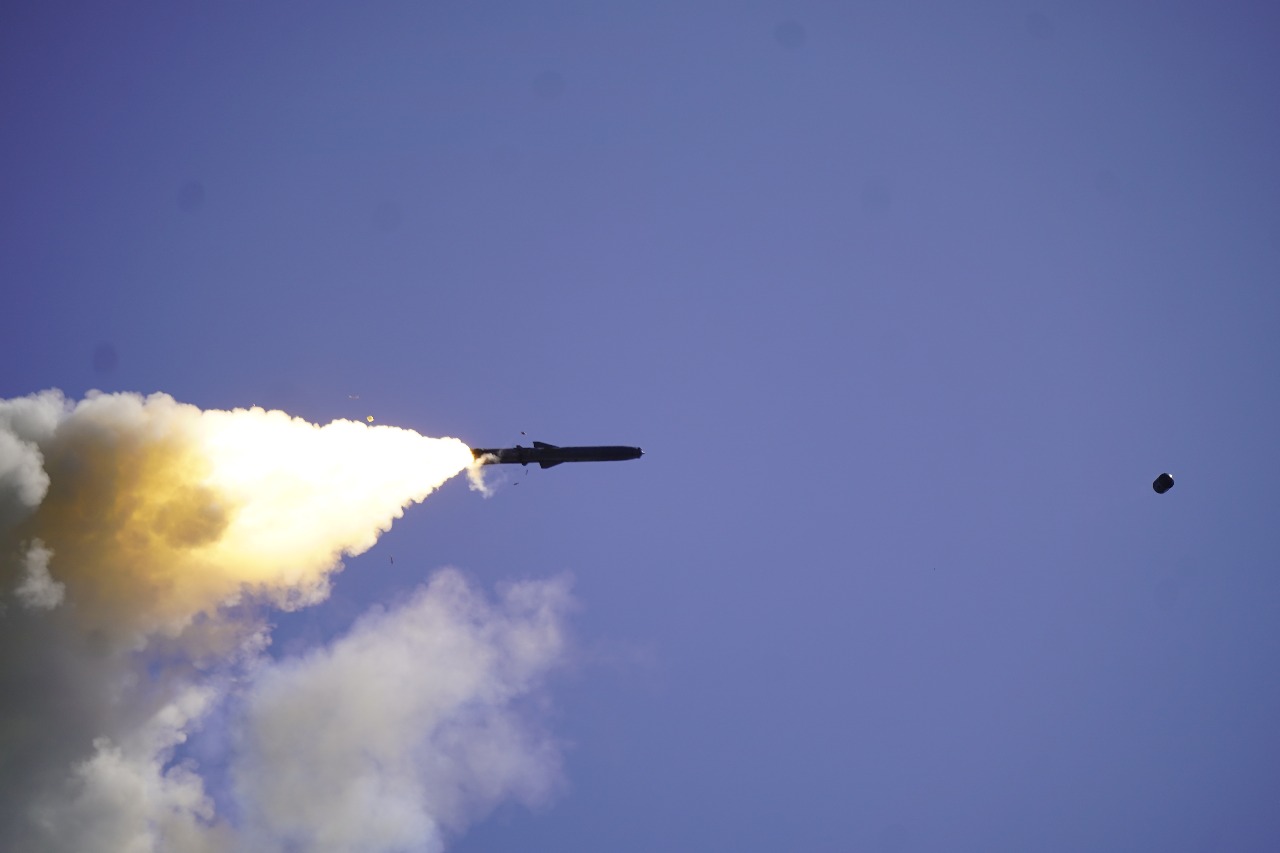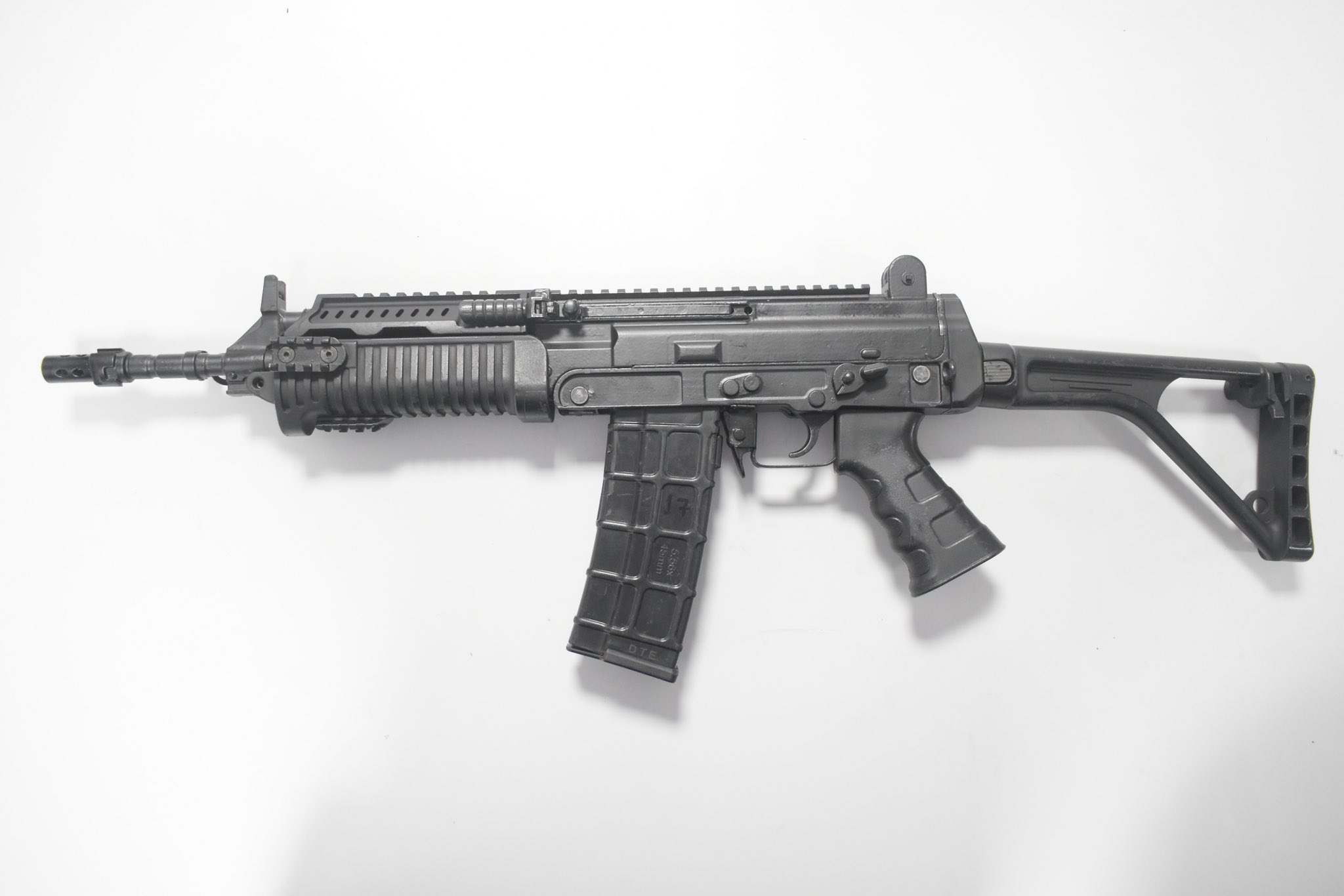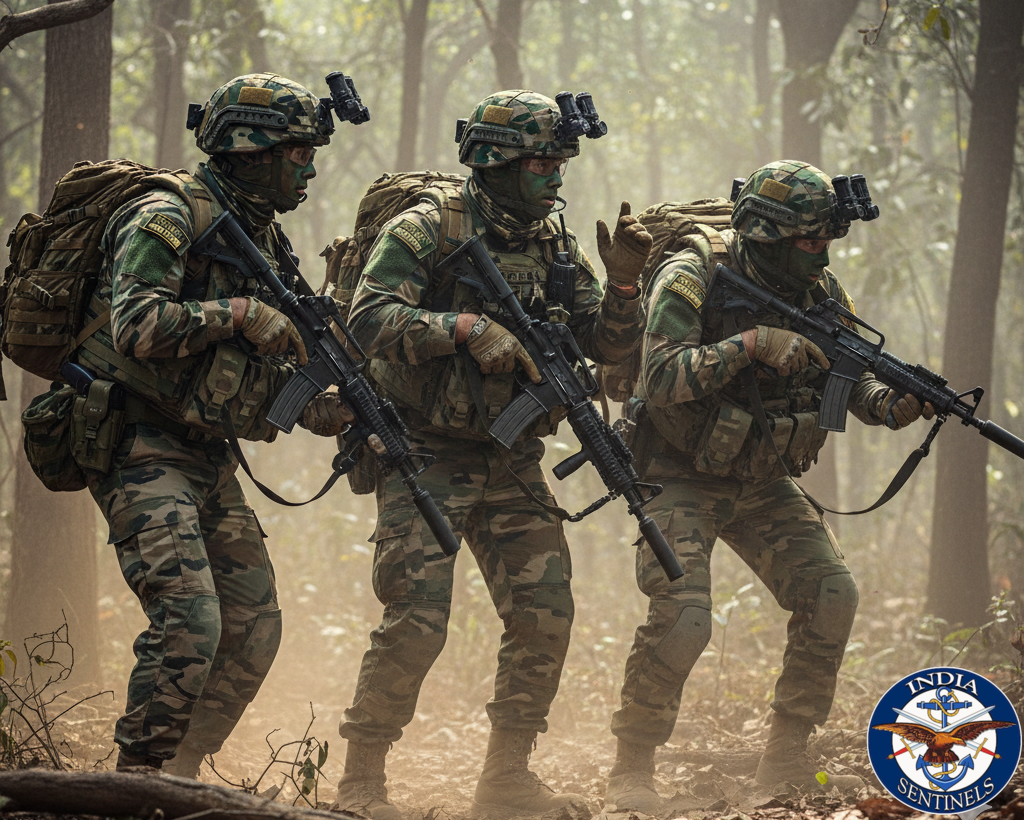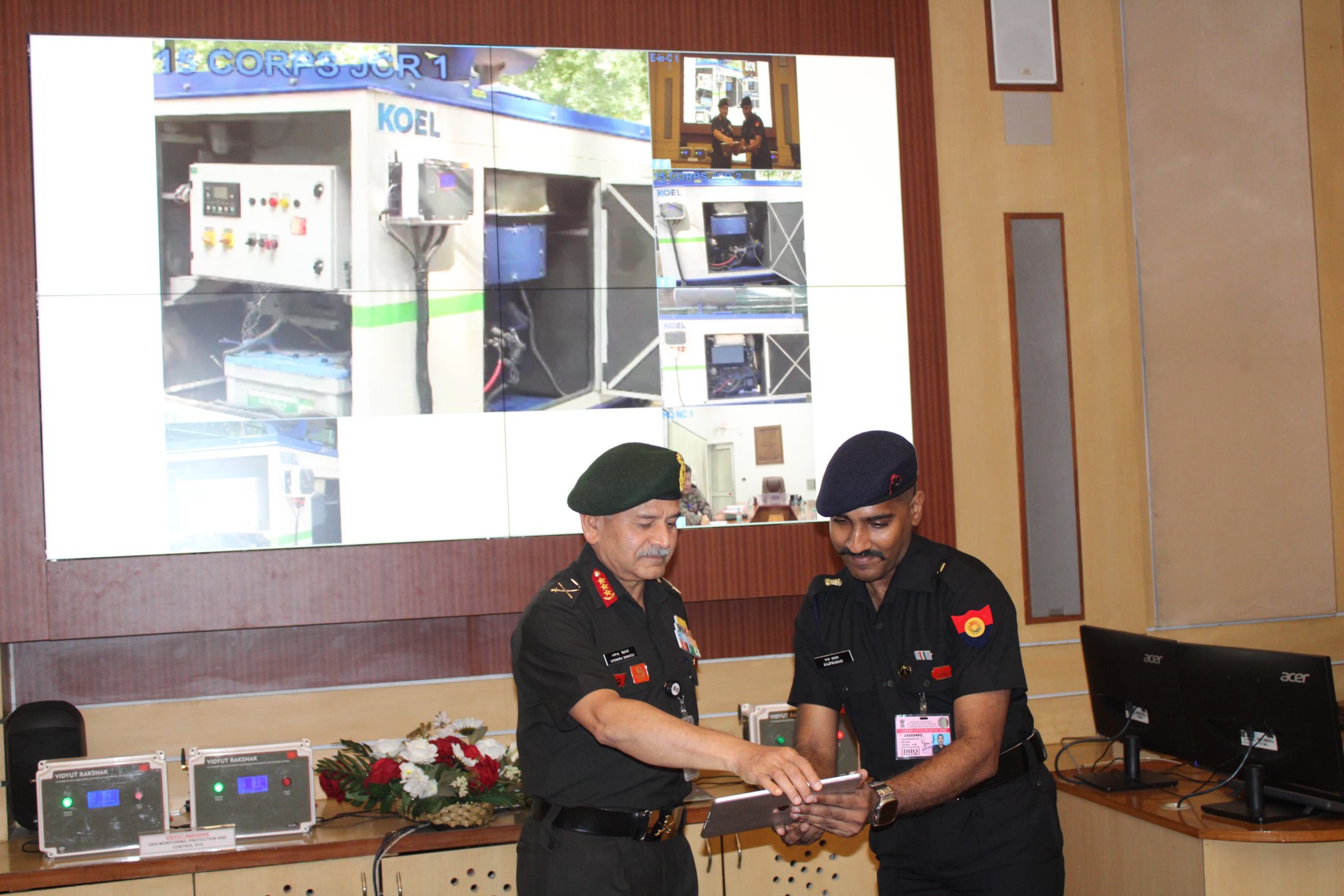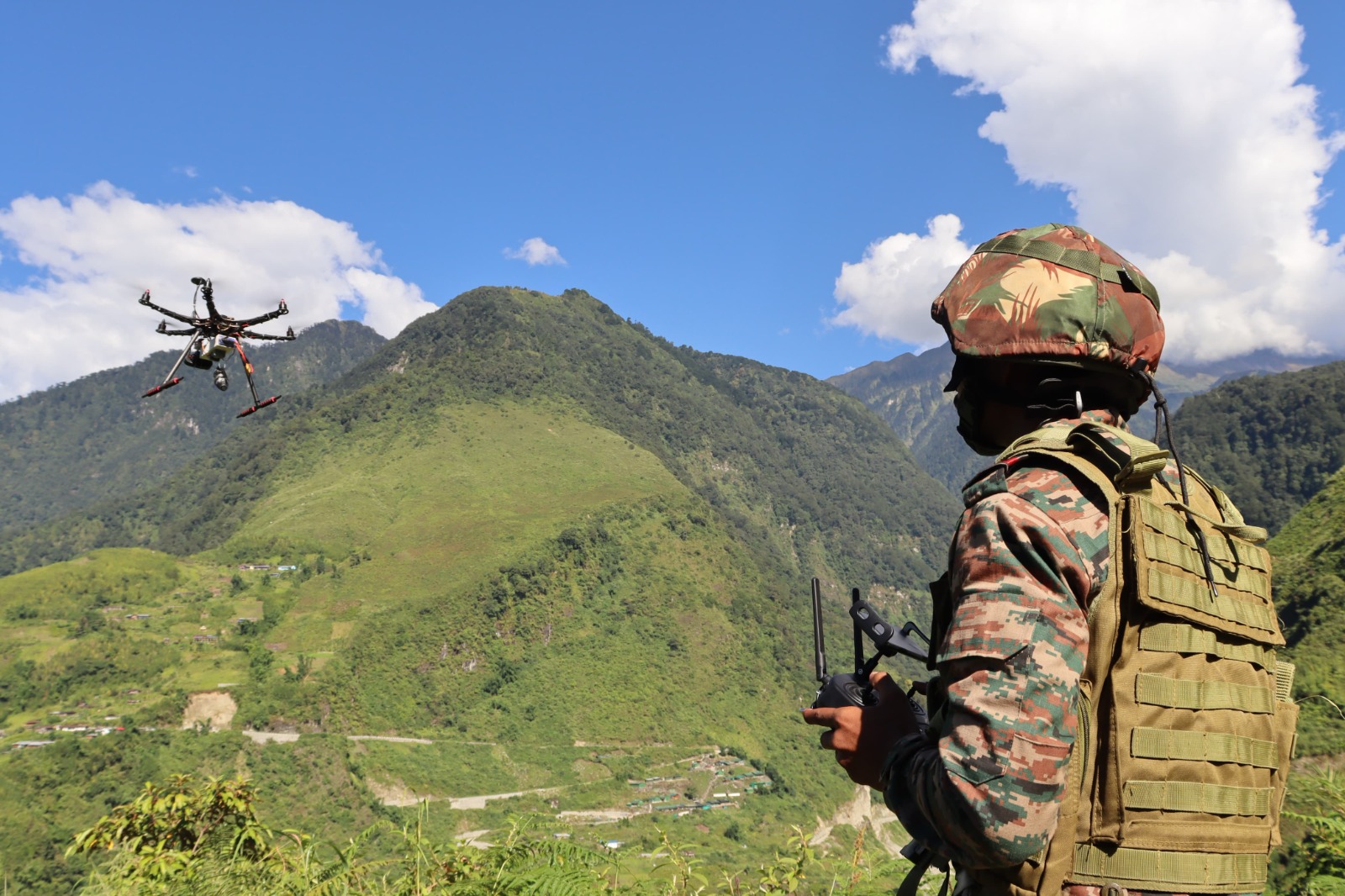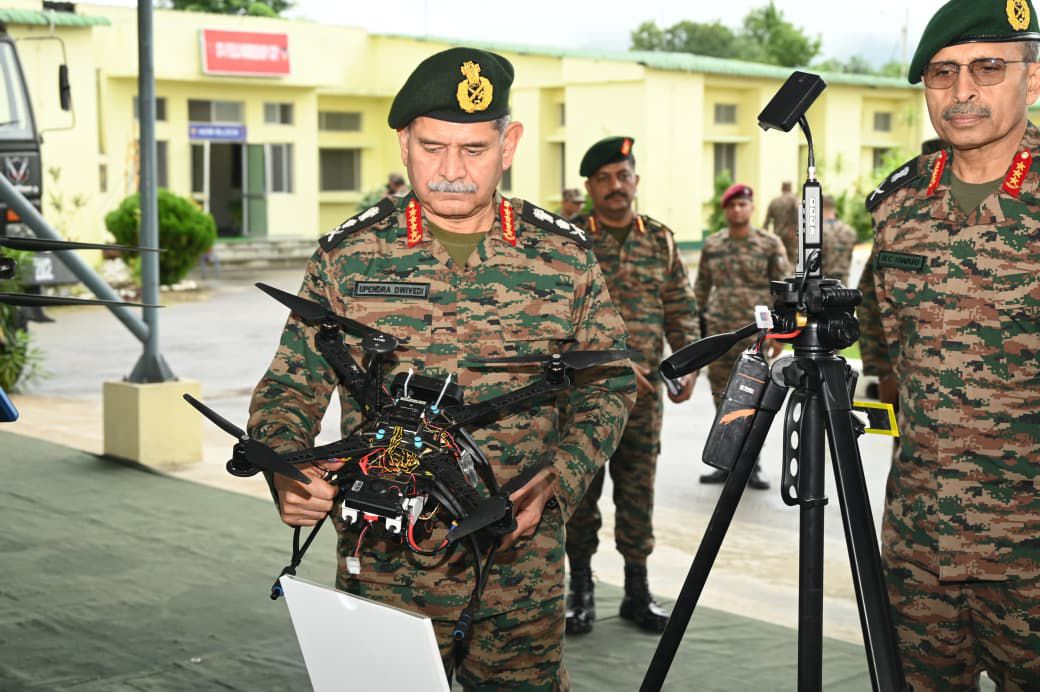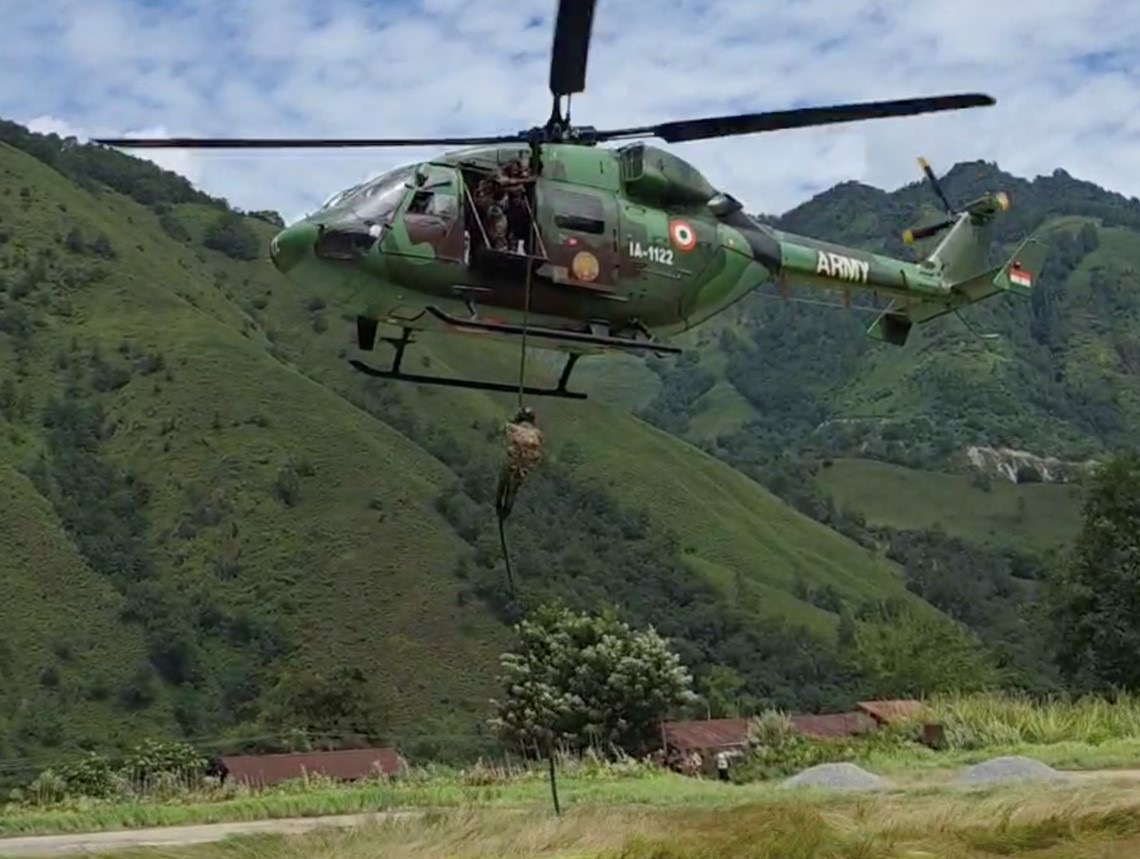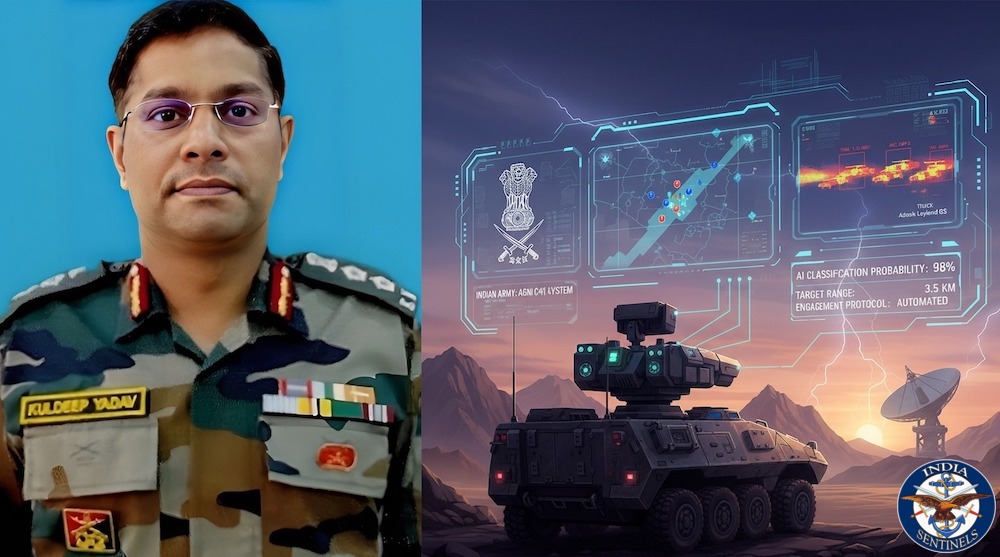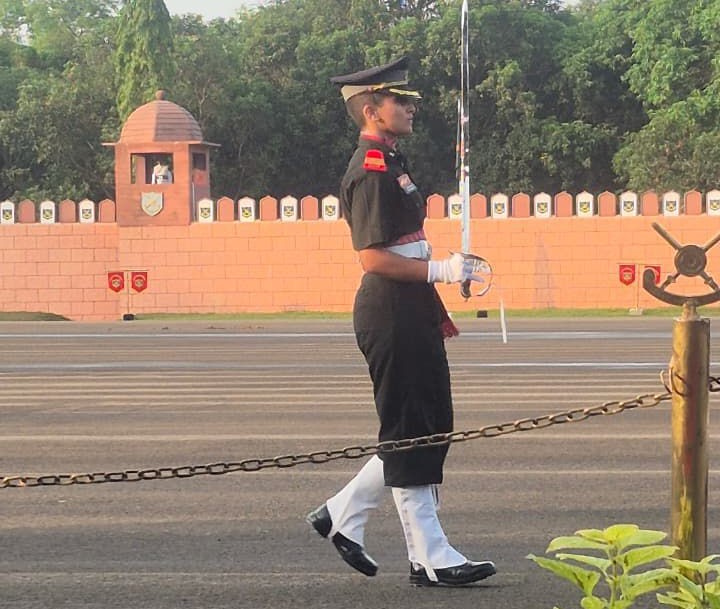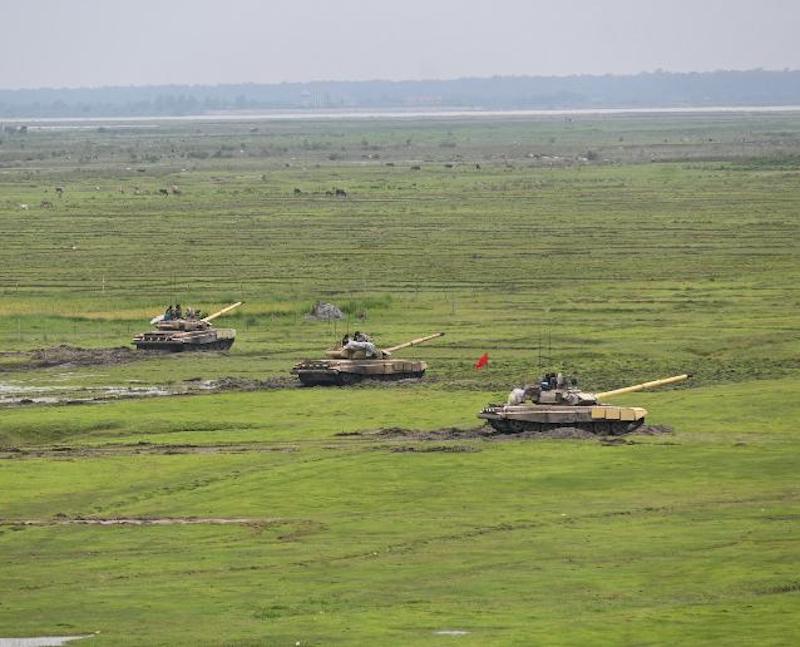 Tanks seen in action during Exercise Teesta Prahar. (Photo: Indian Army)
Tanks seen in action during Exercise Teesta Prahar. (Photo: Indian Army)
Siliguri/New Delhi: The Indian Army’s Eastern Command has successfully concluded “Operation Teesta Prahar” – a large-scale integrated field training exercise that demonstrated the force’s operational readiness in the strategic north Bengal-Sikkim sector. This was revealed in a media release by the Ministry of Defence.
The three-day exercise, conducted at the Teesta Field Firing Range in the strategic Siliguri Corridor, also known as Chicken’s Neck, from May 8 to 10, has gained heightened significance as it follows closely on the heels of Operation Sindoor – the decisive military campaign against Pakistan and Pakistan-based terrorists that has redefined India’s strategic doctrine against cross-border terrorism.
Teesta Prahar was designed to simulate high-intensity combat in challenging riverine terrain, testing the Army’s ability to operate across diverse environments. The drills brought together key combat and support arms – Infantry, Artillery, Armoured Corps, Mechanised Infantry, Para Special Forces, Army Aviation, Engineers, and Signals – in a display of jointness and operational synergy.
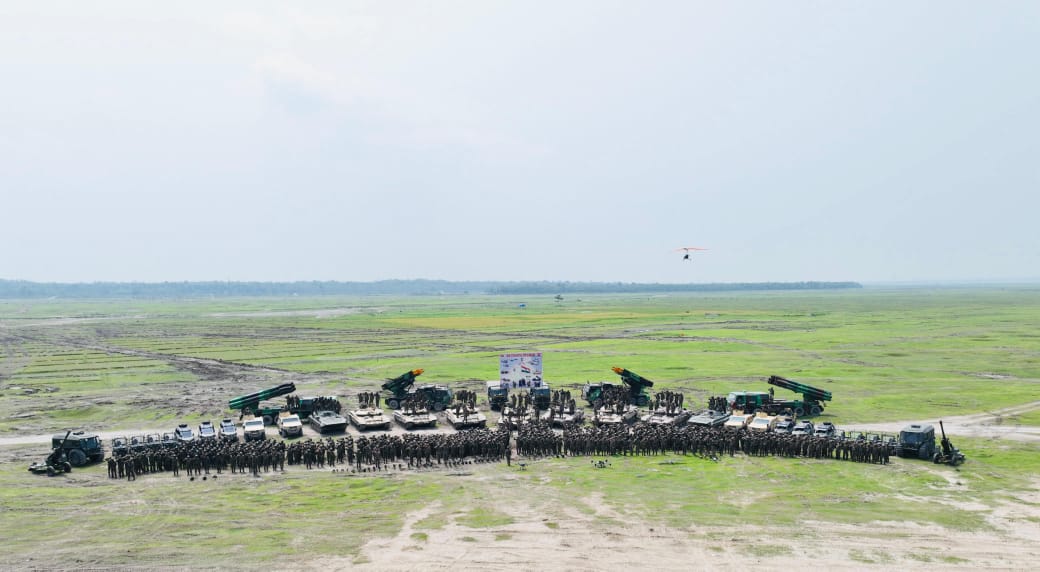 Soldiers and air-defence systems deployed during Exercise Teesta Prahar. (Photo: Indian Army)
Soldiers and air-defence systems deployed during Exercise Teesta Prahar. (Photo: Indian Army)
A central focus of the exercise was the deployment and validation of next-generation weapon systems, high-mobility platforms, and advanced battlefield technologies. These included precision strike capabilities, modern surveillance equipment, and integrated battlefield communication systems, reflecting the Indian Army’s ongoing modernization drive.
“The exercise incorporated tactical operations, combat preparations, and flexible manoeuvres designed to enhance responses to evolving battle situations,” the release read, reaffirming the Army’s commitment to technological excellence and all-terrain operational readiness.
Strategic Context
The timing and scale of Teesta Prahar are particularly noteworthy given its overlap with Operation Sindoor.
Operation Sindoor established a new red line: state-backed terror attacks would be treated as acts of war, and India would respond with decisive, calibrated force. The campaign not only destroyed multiple terrorist bases but also demonstrated India’s ability to control the pace and scope of military operations, restoring deterrence and unveiling a more assertive national security posture.
Military analysts suggest that Teesta Prahar serves several critical purposes in this context. By conducting a high-profile, technology-driven exercise so soon after Operation Sindoor, the Indian Army has signalled its sustained preparedness to respond to any escalation or new threats along sensitive frontiers, particularly in the strategically vital Eastern sector.
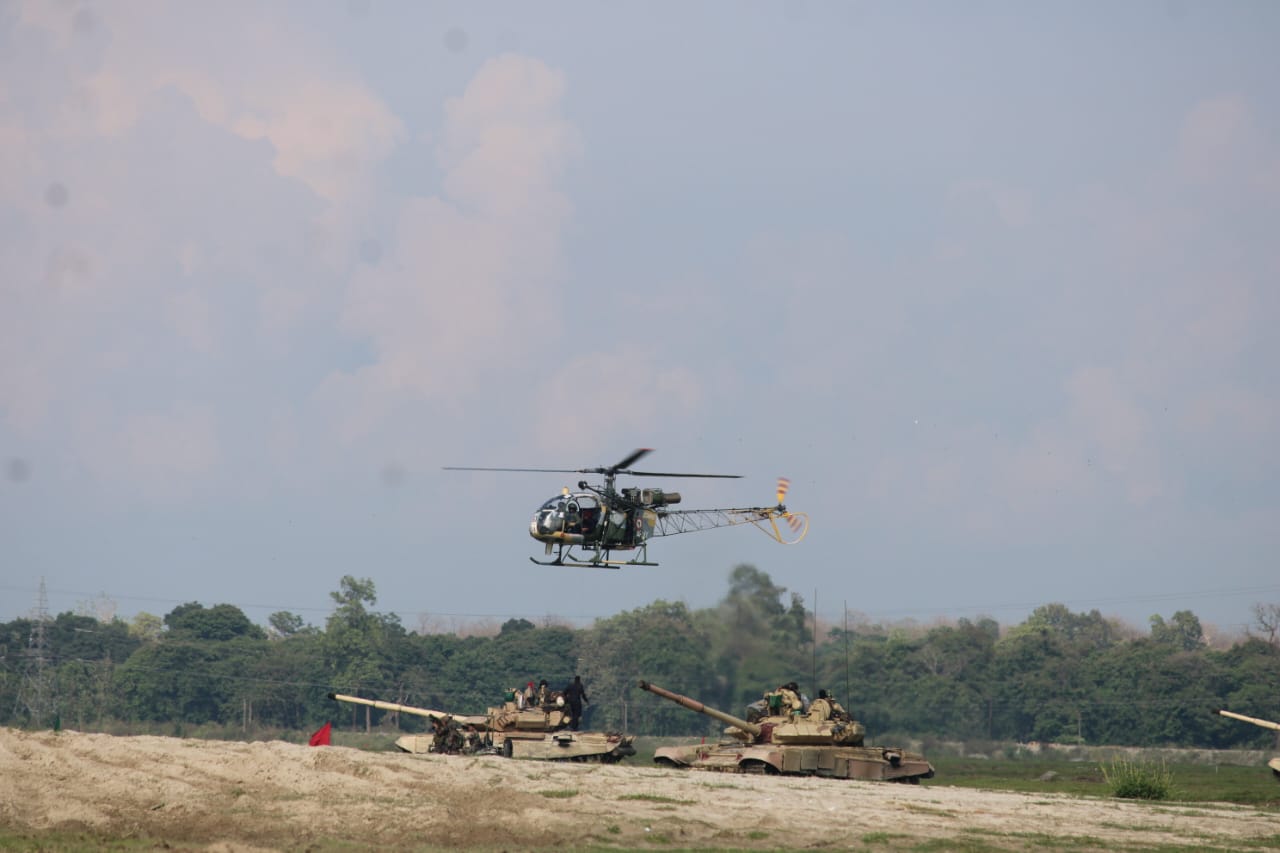 An Army chopper flying over tanks during a drill in Exercise Teesta Prahar. (Photo: Indian Army)
An Army chopper flying over tanks during a drill in Exercise Teesta Prahar. (Photo: Indian Army)
Regional Implications
The Eastern Command’s area of responsibility includes borders with both China and Bangladesh, and the north Bengal-Sikkim sector is of immense strategic importance. The region’s riverine and mountainous terrain poses unique operational challenges, which makes realistic training exercises like Teesta Prahar essential for maintaining combat effectiveness.
Moreover, the exercise’s emphasis on rapid response, adaptive manoeuvres, and integrated use of drones and surveillance platforms aligns with the demands of modern, multi-domain warfare – an imperative highlighted by the swift and precise operations of Operation Sindoor.
Technological Focus
The exercise featured synchronized assaults, tactical fire support, rapid mobility drills, and air-ground integration, all aimed at refining mission execution under realistic and dynamic combat conditions.
Apart from this, defence experts note that the integration of indigenous weapon systems and platforms in the exercise reflects the growing success of India’s “Atmanirbhar Bharat” (self-reliant India) initiative in the defence sector.

